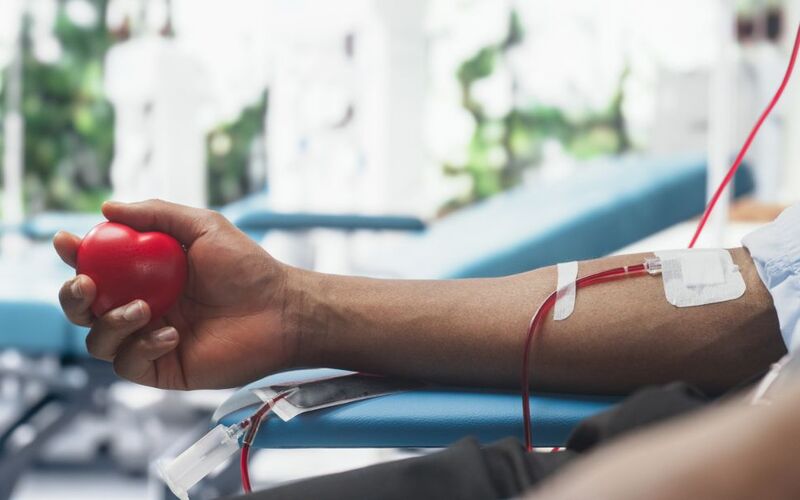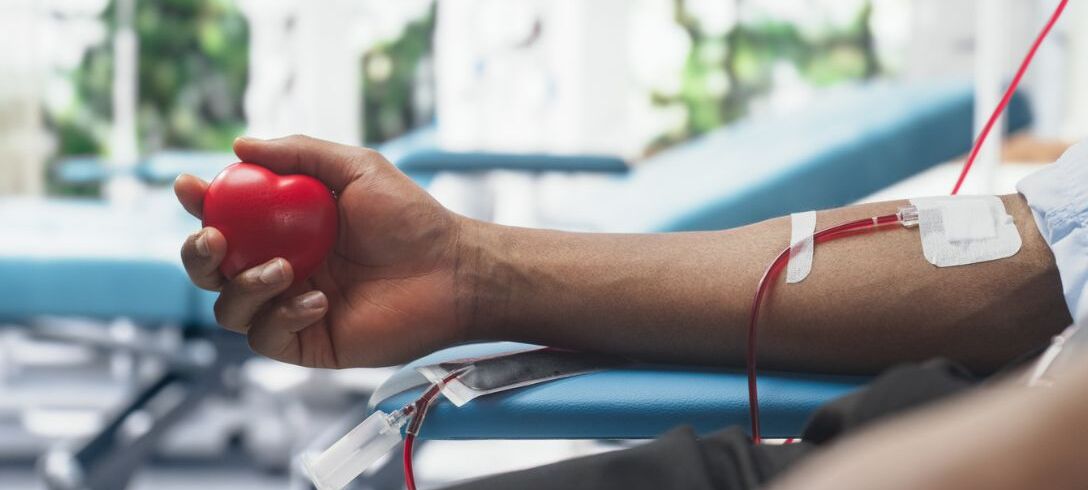What Happens to My Blood After I Donate?
Every January, National Blood Donor Month is observed to honor the life-saving generosity of blood donors and to spotlight the ongoing need for blood and platelet donations. This observance is particularly important during the winter months, when donations often drop due to holiday distractions, colder weather and seasonal illnesses like the flu.
To understand the critical role of blood donations in patient care, we spoke with Mandy Flannery O’Leary, MD, a pathologist at Moffitt Cancer Center. O’Leary shared insights into the journey of donated blood and how it plays a vital role in supporting individuals battling cancer.

Mandy Flannery O'Leary, MD
Can you explain the journey of a blood donation once it arrives at Moffitt? What happens from the point of donation to the point of use?
There are many steps to assure that the right blood product gets to the right patient. The journey of a blood donation begins with rigorous safety and quality measures to protect both donors and recipients. Donors are carefully screened for health and infection risks, with vital signs and iron levels checked before donation. Depending on the donor's blood type and community needs, they may provide whole blood or specific components like platelets. Once collected, the blood undergoes FDA-mandated testing for infections and proper typing at regional blood centers. Only units that meet strict safety standards are processed, labeled and approved for distribution to hospitals like Moffitt.
At the cancer center, donated blood is added to inventory and verified before use. When a clinical team orders a blood product, the blood bank performs compatibility testing to ensure a safe match. Special procedures like radiation may be applied to prevent complications, and strict protocols ensure the right product is administered to the right patient. Throughout the transfusion process, nursing staff monitor the patient for adverse reactions. Afterward, detailed records are updated in multiple systems to track the transfusion's completion and ensure traceability for future care.
How critical are blood donations for the treatments provided in the Hematopathology Department, and what types of conditions most frequently require transfusions?
Blood donations are critical for the care Moffitt provides to patients. Without these life-saving donations, many patients would not be able to undergo treatment for their diseases.
For example, patients getting treated for blood cancers, like leukemia, or solid tumors, like prostate or colon cancer, need healthy levels of red blood cells to carry oxygen and platelets to help their blood clot. Different blood products help bring these levels back to normal so patients can safely have treatments, tests or surgeries. At Moffitt, the surgical teams use the most red blood cells, while patients with blood cancers need the most platelets.
What has been one of the most memorable instances where a blood donation made a significant difference in a patient's treatment or outcome?
As a transfusion specialist, the scariest moments are when we don’t have blood products available. I’ve faced this during mass casualty events and hurricanes, and those experiences have left a lasting impact. That’s why I’m always encouraging people to donate blood. The most unforgettable moments are when a patient desperately needs blood, but we don’t have it — it’s a situation no one should ever have to face.
What are some common misconceptions about blood donations that you encounter, and how do you address them?
A common misconception is that it is safer to get blood from relatives or friends than the general donation pool. This is not the case. The blood donation system is very safe. General blood donors are donating out of the goodness of their hearts. Sometimes, relatives or friends may feel pressure to donate when they really shouldn’t, which could be a risk to the patient.
Another one of the recent misconceptions is the ability to get blood from non-vaccinated donors, like people who haven’t received a certain vaccine like COVID or flu vaccine. Since that information is not required by the FDA from donors, there is no way for blood centers to separate blood based on donor vaccination status.
As we observe Blood Donor Month, what message would you like to share with both regular donors and those considering their first donation?
I can’t say it enough on behalf of the clinical teams and patients but thank you for what you do. Fighting cancer is a team effort, and we couldn’t do it without our blood donors.
To donate blood in your local community visit www.lifesouth.org.




